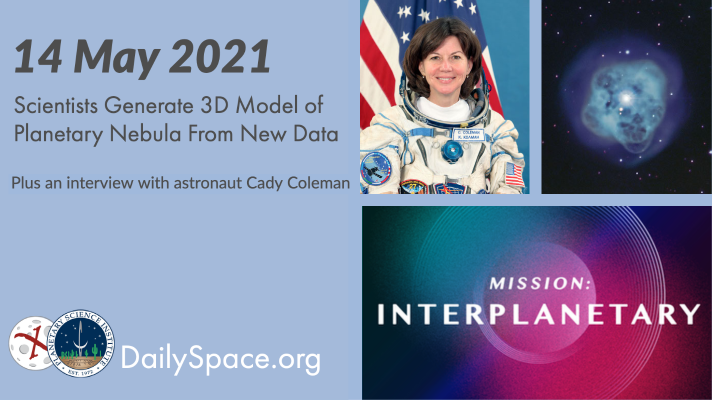
May 17, 2021 | Climate Change, Daily Space, Earth, Guest Interview, Planetary Nebulae, Spacecraft, The Sun
Using spectrographic data from several different telescopes, a team put together a three-dimensional model of planetary nebula NGC 1514, which allowed them to further study the shape and internal motion of the object. Plus, Antarctic sea ice, a history of current flow, magnetic waves, and an interview with astronaut Cady Coleman.
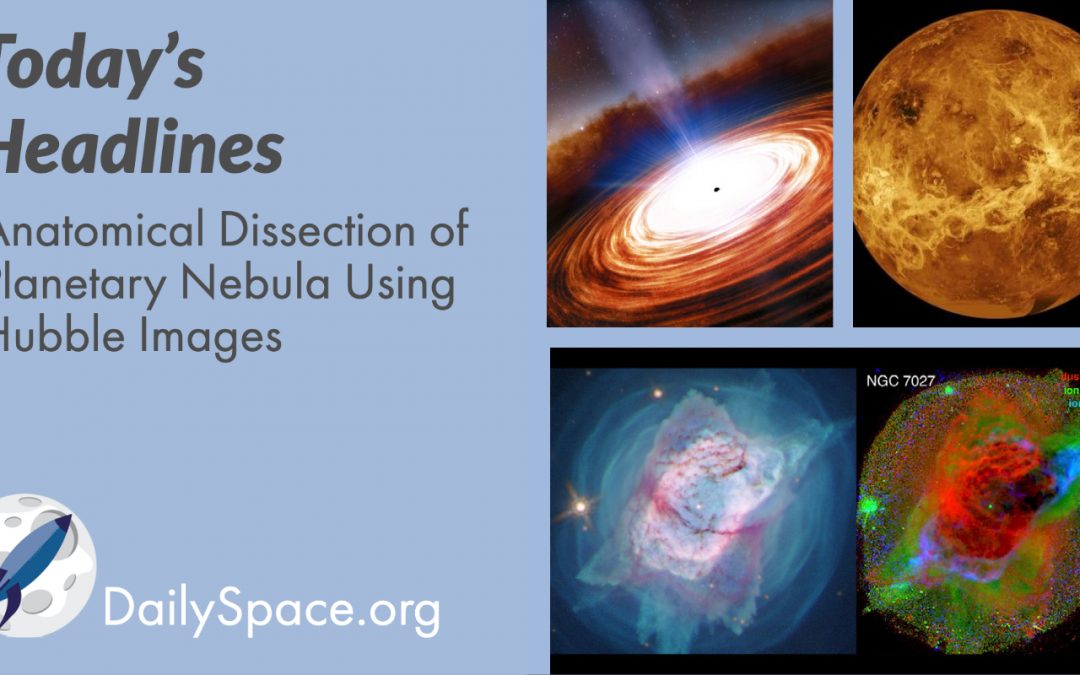
Jan 20, 2021 | Climate Change, Daily Space, Exoplanets, Galaxies, Guest Interview, Jupiter, Neutron Stars / Pulsars, Physics, Planetary Nebulae, Quasar, Supermassive Black Holes, Venus
Our coverage of last week’s AAS meeting continues with new work on the formation of planetary nebula based on Hubble Space Telescope images. Plus, a massive quasar in the early universe, water ice on Ganymede, a super-puff planet, and plans for taking spectra of Venus’ surface, featuring our guest, PSI scientist Dr. Darby Dyer.
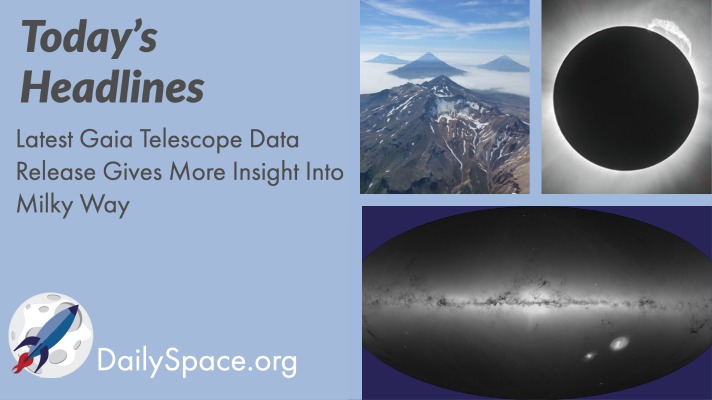
Dec 8, 2020 | Asteroids, Book Club, Earth, ESA, Milky Way, Planetary Nebulae, Science, Stars
The release of the Gaia space telescope’s Early Data Release 3 has paved the way for a 3D map of the Milky Way, a glimpse at its history, and the acceleration of our own solar system. Plus, Alaskan volcanoes, the Stingray Nebula fades, and yes, that really was a Centaur rocket booster captured by the Earth. And we announce our first CosmoQuest Book Club selection!
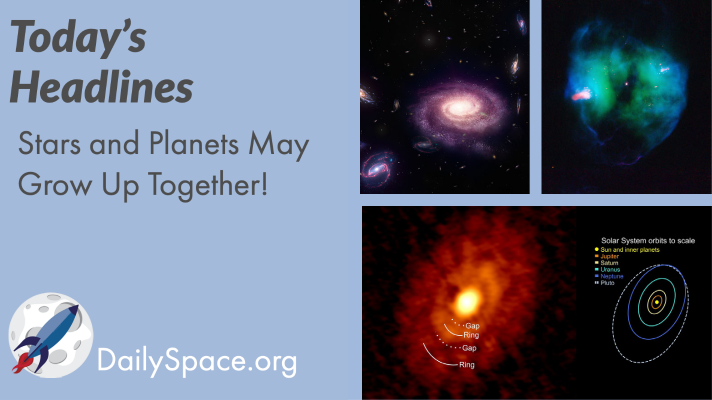
Oct 9, 2020 | Daily Space, Exoplanets, Galaxies, Observatories, Planetary Nebulae, Planets, Star Forming Region
New images taken with the ALMA Observatory show a young proto-stellar disk with the rings and gaps of planetary formation growing together, once again challenging our preconceptions. And other research into stellar formation adds heavy metals to the mix to match models to observations. Plus an old, metal-poor galaxy halo.
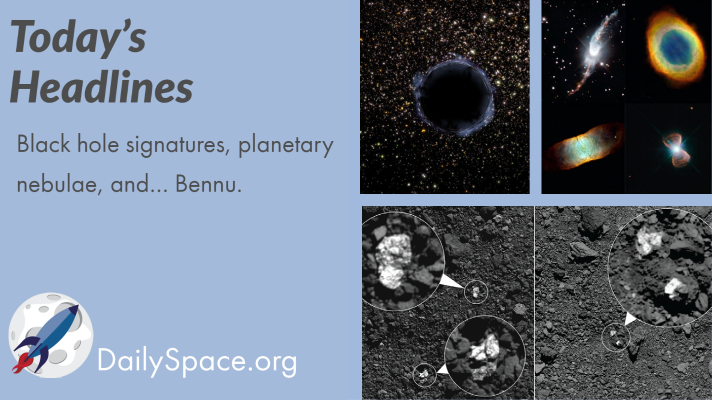
Sep 23, 2020 | Asteroids, Black Holes (Stellar), Daily Space, JAXA, OSIRIS-REx, Planetary Nebulae
Astrophysicists have finally figured out how to tell neutron stars apart from black holes by finding the signature of the event horizon. Another team discovered that planetary nebulae likely get their unique shapes due to binary systems. And we present some updates on the origin of rocks (and rocks and rocks and pebbles) on Bennu. Same with Ryugu, but we don’t hate Ryugu.
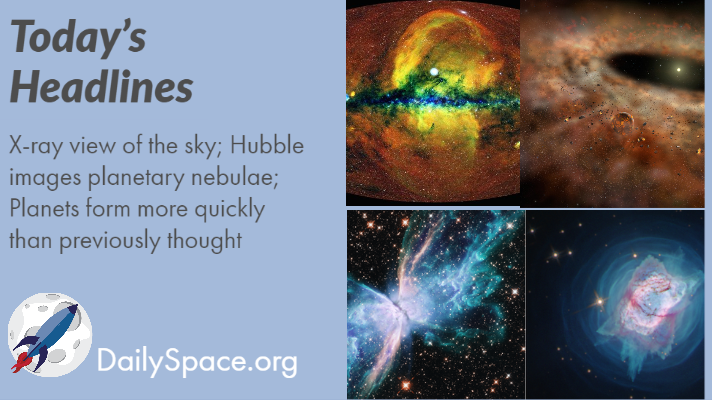
Jun 19, 2020 | Daily Space, ESA, Exoplanets, Galaxies, Milky Way, Planetary Nebulae
Join us today as we take a look at an amazing all-sky view done in x-ray wavelengths. We also get to see gorgeous images Hubble took of planetary nebulae that show wild processes going on. And finally, we learn that planets form much more quickly than previously thought.








 We record most shows live, on Twitch. Follow us today to get alerts when we go live.
We record most shows live, on Twitch. Follow us today to get alerts when we go live.